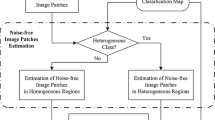Abstract
The sparse recovery algorithms formulate synthetic aperture radar (SAR) imaging problem in terms of sparse representation (SR) of a small number of strong scatters’ positions among a much large number of potential scatters’ positions, and provide an effective approach to improve the SAR image resolution. Based on the attributed scatter center model, several experiments were performed with different practical considerations to evaluate the performance of five representative SR techniques, namely, sparse Bayesian learning (SBL), fast Bayesian matching pursuit (FBMP), smoothed l0 norm method (SL0), sparse reconstruction by separable approximation (SpaRSA), fast iterative shrinkage-thresholding algorithm (FISTA), and the parameter settings in five SR algorithms were discussed. In different situations, the performances of these algorithms were also discussed. Through the comparison of MSE and failure rate in each algorithm simulation, FBMP and SpaRSA are found suitable for dealing with problems in the SAR imaging based on attributed scattering center model. Although the SBL is time-consuming, it always get better performance when related to failure rate and high SNR.
Similar content being viewed by others
References
GERRY M J, POTTER L C, INDER J G, ANDRIA V M. A parametric model for synthetic aperture radar measurements [J]. IEEE Transactions on Antennas and Propagation, 1999, 47(7): 1179–1188.
MALIOUTOV D M, CETIN M, WILLSKY A S. Sparse signal reconstruction perspective for source localization with sensor arrays [J]. IEEE Trans Signal Process, 2005, 53(8): 3010–3022.
COTTER S F, RAO B D, ENGAN K, KREUTZ-DELGADO K. Sparse solutions to linear inverse problems with multiple measurement vectors [J]. IEEE Trans Signal Process, 2005, 53(7): 2477–2488.
IVANA S, WILLIAM C K. Imaging of moving targets with multi-static SAR using an overcomplete dictionary [J]. IEEE Journal of Selected Topics in Signal Processing, 2010, 4(1): 164–176.
ZOU Fei, LI Xiang, ROBERTO T. Inverse synthetic aperture radar imaging based on sparse signal processing [J]. Journal of Central South University of Technology, 2011, 18(5): 1609–1613.
CETIN M, KARL W C. Feature-enhanced synthetic aperture radar image formation based on nonquadratic regularization [J]. IEEE Trans Image Process, 2001, 10(4): 623–631.
WEI Shun-jun, ZHANG Xiao-ling. Sparse reconstruction for SAR imaging based on compressed sensing [J]. Progress in Electromagnetics Research, 2010, 109: 63–81.
SAMADI S, CETIN M, MASNADI-SHIRAZI M A. Sparse representation-based synthetic aperture radar imaging [J]. IET Radar, Sonar and Navigation, 2011, 5(2): 182–193.
XU Jiang-pin, PI Yi-ning, CAO Zong-jie. Bayesian compressive sensing in synthetic aperture radar imaging [J]. IET Radar Sonar Navig, 2012, 6(1): 2–8.
CHEN Zhao-fu, TAN Xing, XUE Ming, LI Jian. Bayesian SAR imaging [C]// Frederick D. Garber, Proceeding of the SPIE, Algorithms for Synthetic Aperture Radar Imagery XVII. Orlando, Florida: SPIE, 2010: 1–12.
POTTER L C, ERTIN E, PARKER J, CETIN M. Sparsity and compressed sensing in radar imaging [J]. Proc IEEE, 2010, 98(6): 1006–1020.
VISHAL M P, GLENN R E, DENNIS M H, RAMA C. Compressed synthetic aperture radar [J]. IEEE Journal of Selected Topics in Signal Processing, 2010, 4(2): 244–254.
XUE Ming, SANTIAGO E, SEDEHI M, TAN Xing, LI Jian. SAR imaging via iterative adaptive approach and sparse Bayesian learning [C]// Proceeding of the SPIE, Algorithms for Synthetic Aperture Radar Imagery XVI. Orlando, Florida: SPIE, 2009: 1–12.
VARSHNEY K R, CETIN M, FISHER J W, WILLSKY A S. Sparse representation in structured dictionaries with application to synthetic aperture radar [J]. IEEE Trans on Signal Processing, 2008, 56(8): 3548–3561.
LIU Zhi-xue, LI Gang, ZHANG Hao, WANG Xi-qin. Sparse-driven sar imaging using MMV-StOMP [C]// 1st International Workshop on Compressed Sensing applied to Radar. Bonn, Germany: IEEE Press, 2012: 14–16.
YANG Zhao-cheng, LIU Zheng, LI Xiang, NIE Lei. Performance analysis of stap algorithms based on fast sparse recovery techniques [J]. Progress in Electromagnetics Research B, 2012, 41: 251–268.
TIPPING M E. Sparse Bayesian learning and the relevance vector machine [J]. Journal of Machine Learning Research, 2001, 2(1): 211–244.
WIPF D P, RAO B D. Sparse Bayesian learning for basis selection [J]. IEEE Trans on Signal Processing, 2004, 52(8): 2153–2164.
SCHNITER P, POTTER L C, ZINIEL J. Fast Bayesian matching pursuit [C]// Proc Workshop on Information Theory and Application (ITA). La Jolla, CA: IEEE Press, 2008: 326–333.
HOSEIN M G, BABAIE-ZADEH M, JUTTEN C. A fast approach for overcomplete sparse decomposition based on smoothed l0 norm [J]. IEEE Trans Signal Process, 2009, 57(1): 289–301.
WRIGHT S J, NOWAK R D, FIGUEIREDO M A T. Sparse reconstruction by separable approximation [J]. IEEE Trans Signal Process, 2009, 57(7): 2479–2493.
BECK A, TEBOULLE M. A fast iterative shrinkage-thresholding algorithm for linear inverse problems [J]. SIAM J Imag Sci, 2009, 2(1): 183–202.
TROPP J A, WRIGHT J. Computational methods for sparse solution of linear inverse problems [J]. Proc of IEEE, 2010, 98(6): 948–958.
TROPP J A, GILBERT A C. Signal recovery from random measurements via orthogonal matching pursuit [J]. IEEE Trans Inform Theory, 2007, 53(12): 4655–4666.
NEEDELL D, TROPP J A. CoSaMP: Iterative signal recovery from incomplete and inaccurate samples [J]. Appl and Comp Harmonic Anal, 2009, 26(3): 301–321.
FIGUEIREDO M A T, NOWAK R D, WRIGHT S J. Gradient projection for sparse reconstruction: Application to compressed sensing and other inverse problems [J]. IEEE Journal of Selected Topics in Signal Processing, 2007, 1(4): 586–597.
QIU Kun, DOGANDZIC A. Variance-component based sparse signal reconstruction and model selection [J]. IEEE Trans Signal Process, 2010, 58(6): 2935–2952.
ZHANG Zhi-ling, RAO B D. Sparse signal recovery with temporally correlated source vectors using sparse Bayesian learning [J]. IEEE Journal of Selected Topics in Signal Processing, 2011, 5(5): 912–926.
Author information
Authors and Affiliations
Corresponding author
Additional information
Foundation item: Project(61171133) supported by the National Natural Science Foundation of China; Project(11JJ1010) supported by the Natural Science Fund for Distinguished Young Scholars of Hunan Province, China; Project(61101182) supported by National Natural Science Foundation for Young Scientists of China
Rights and permissions
About this article
Cite this article
Su, Wg., Wang, Hq. & Yang, Zc. Synthetic aperture radar imaging based on attributed scatter model using sparse recovery techniques. J. Cent. South Univ. 21, 223–231 (2014). https://doi.org/10.1007/s11771-014-1933-4
Received:
Accepted:
Published:
Issue Date:
DOI: https://doi.org/10.1007/s11771-014-1933-4




